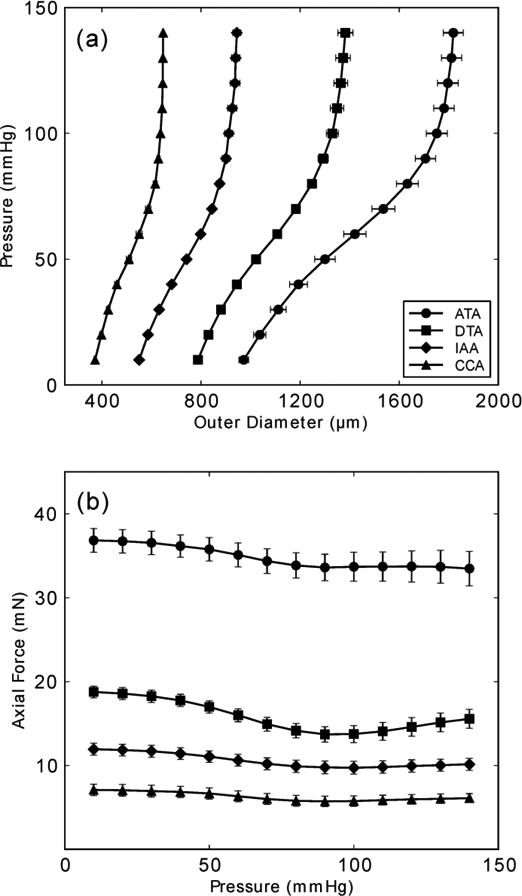Figure 1.

Mean pressure – diameter and transducer-measured axial force – pressure data from the ascending thoracic aorta (ATA), descending thoracic aorta (DTA), infrarenal abdominal aorta (IAA), and common carotid artery (CCA) from wild-type control mice (n = 5 each, with error bars denoting standard errors of the mean (SEM), which appear very small for vessels having a smaller caliber). All data shown was taken from unloading curves, which allows one to compute the stored energy that is available to do work on the blood during elastic recoil of the vessel. Note the significant differences in geometry and mechanics amongst these central arteries. Toward this end, note further that Collins et al.12 showed that the suprarenal abdominal aorta (SAA) and infrarenal abdominal aorta (IAA) exhibit a similar material stiffness despite a different structural stiffness (due to different inner radii and wall thicknesses), hence reducing the experimental need somewhat when mapping regional differences in the aorta.
